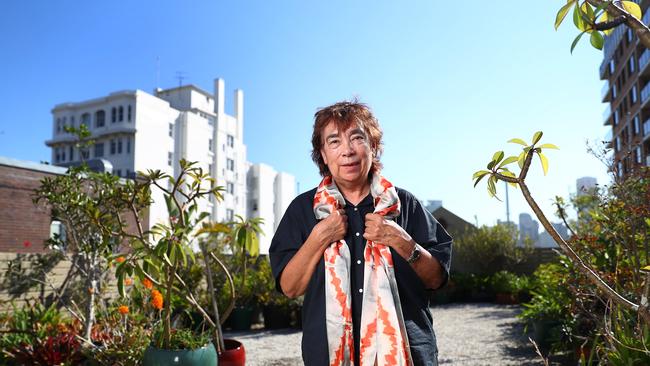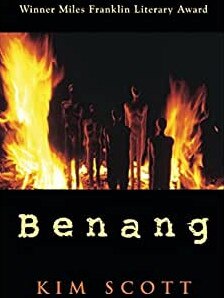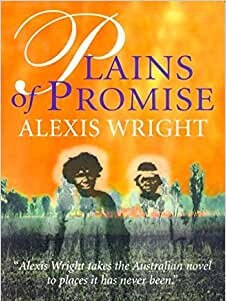The voice and the canon
Literature by Indigenous Australians - the voice from the heart - is the true core of the Australian canon.

The ur-text of the Australian canon appeared just over two centuries ago, in 1819, when First Fruits of Australian Poetry by Barron Field, a Supreme Court judge of New South Wales with literary pretensions, was published in Sydney.
It is fair to say the slim volume was an uninspired start. Here is the opening stanza of Field’s The Kangaroo:
Kangaroo, Kangaroo!
Thou Spirit of Australia,
That redeems from utter failure,
From perfect desolation,
And warrants the creation
Of this fifth part of the Earth,
Which would seem an afterbirth,
Not conceiv‘d in the Beginning
(For GOD bless‘d His work at first,
And saw that it was good),
But emerg‘d at the first sinning,
When the ground was therefore curst; —
And hence this barren wood!
Back in England, Samuel Taylor Coleridge and William Wordsworth liked the poem, at least according to Field’s London friend Charles Lamb, though few since have shared that opinion. It has been mainly held up as proof that literary culture in Australia began in a defensive cringe and stayed like that long afterward.
Yet we should not be so quick to discount Field. He was a powerful figure in the young colony. His legal decisions helped shape the country we became. Most significant, according to recent scholars, was his part in developing a uniquely local application of the principle of terra nullius.
While the case which established the principle of “empty land” had to do with dull issues of taxation, it is worth exploring in the light of Field’s responses to antipodean space. Field’s poems might be satirical in intent, but they do insist sincerely on one fact: the impossibility of “real” poetry being written here. Field went so far to claim that poetry was impossible in a landscape without deciduous trees.
Here, then, is the founding paradox of Australian literature: it began in refusal of the very environment that surrounded the colonists; and, by extension, a refusal to view the first inhabitants of that environment as fully human either – certainly not humans capable of making art or song worth the Western eye or ear’s attention.

Most importantly, that aesthetic rejection was tied to a legal and political compact that served to reinforce it over time. A continent which had been (in Les Murray’s memorable phrase) “ruled by poetry” for tens of thousands of years, would be governed by prose after 1788.
Just how pedestrian that “prose” could be I discovered this past year, after returning to university to complete a long-abandoned PhD in English literature. It had been a decade since I had begun writing the essays assembled in 2012’s The Burning Library – a book which grappled with the idea of an Australian canon and what it might consist of – but I had grown dissatisfied with my findings. In The Burning Library, I made Federation my cut-off for inclusion. My new research set out to understand if 1901 was a date too arbitrary and late to unlock the mysteries of our national literature.
What I first discovered was that the literature of our colonial era was most fascinating for what it did not possess. The Romantic revolution in poetry, for example, typified by the experiments in form and subject matter by figures such as Shelley and Coleridge, so different to the smooth, urbane rhyming couplets of eighteenth-century figures such as Alexander Pope, barely made a mark in Australia.
Robbie Burns was revered for his Celtic roots and agrarian background, Lord Byron as a celebrity, otherwise New South Wales appeared to move from tidy neoclassicism to Victorian sentiment without once stopping to consider Wordsworth’s daffodils.
Instead, the presses of colonial era New South Wales and Van Diemen’s Land produced a tidy, clubbable, public-facing literature: satires for and against various grandees and officials, odes to mark births and deaths, squibs for newspaper columns or maudlin laments with insistent rhymes. It was a literature embarrassed by the circumstances in which it found itself, derivative and dull.
But among this determined mediocrity, there were occasional glints. Eliza Hamilton Dunlop, for example, Irish wife of the “Protector of Aborigines” at Penrith and Wiseman’s Ferry. Her poems of witness emerging from news of the Myall Creek massacre of indigenous men, women and children in 1838 sought to enter into the experience of those who suffered at the hands of their murderers (a position for which she was mercilessly attacked by the newly established Fairfax press).

Or Daniel Deniehy, our first critic of note. The son of risen convicts, he possessed a love of literature and rhetoric that served him brilliantly as a parliamentarian, where, by sheer persuasive force, he argued against William Charles Wentworth’s efforts to recreate in the colonies a “bunyip” aristocracy. Deniehy’s passionate Republicanism spoke to the possibility of a nation different in kind, not just style, to its British progenitor. He later died, drunk and defeated, in a Bathurst street.
Then there was Charles Harpur, who from his lonely rural situations sought to begin a national literature from scratch – reimagining the British Romantics and American Transcendentalists as models with which to do so. Judith Wright thought him the most “many sided” Australian poet of the Nineteenth century. But he, too, died disenchanted of his literary and political hopes.
Everywhere I looked was an indifference and resistance to the efforts of literary figures to think of the colonies as anything more than a brutal and relentless project of land enclosure and resource exploitation – a frenzy which increased with the discovery of gold after 1851 – whose wealth was spent on borrowed finery from the Old World.
In short, I found a culture hostile to original literary and artistic creation because it had, as a first order of business, set its face against it. To look too closely at antipodean space would oblige its inhabitants to consider uncomfortable truths. That it had its own kind of beauty, for instance – or that others, preceding the Europeans, had seen that beauty and given due reverence. When I learned that Sydney Harbour’s beautiful Lavender Bay had, for decades after European arrival at Port Jackson, housed a Prison Hulk – a floating prison off a terrestrial one – a gloomy thought occurred. Perhaps colonial culture was best thought of a having never properly made landfall in New South Wales.
Rather, these neo-Europeans bought with them a flatpack Enlightenment ideology and a calculated narrowness of vision. Their achievements were of course considerable. The industry and effort they employed was unarguably impressive, their survival and eventual material success in the face of terrible isolation and a hostile environment simply remarkable. Still, as Matthew Arnold put it during this same era, culture is the spiritual standard by which we understand wealth to be mere “machinery”.
No, there was something missing from our literature which sprang directly from the circumstances of our founding. Some of the best writers and thinkers of the Twentieth century intuited the lack, of course. Judith Wright, child of those tough and vigorous men who “opened” the New England region of New South Wales, was one whose poetry and advocacy did much to open space for indigenous voices in our literature.
But such progress was halting until more recent decades, when an explosion of writing by aboriginal Australians made it impossible to ignore their aesthetic skill or political urgency. As a critic, reviewer and publisher, it was a thrill to first encounter the sharp social realism of Melissa Lukashenko, an honour to shepherd through the presses for Picador a new novel by Kim Scott.
But it wasn’t until a recent invitation from the University of Queensland Press to write a twenty-fifth anniversary introduction to the reissue of Alexis Wright’s first novel, Plains of Promise, that the penny finally dropped. Wright, a Waanyi woman from the gulf region of Far North Queensland, took as the opening image of her debut a poinciana tree, planted by the early missionaries of the district. That deciduous import is depicted as a greedy incomer, whose roots move deep into the bowels of ancestral earth, depleting vigour and poisoning the soil. Wright goes on to present an alternative vision of Australian place. Her prose swings like a weathervane to the local breezes. Her sentences fret themselves to the contours of landscape, while her vision of Country teems with flora and fauna, both feral and endemic. Hers is a big-sky aesthetic – and the resulting fiction is shaped by an ecological imagination without comparison in the imported literature of this continent: a plenitude that overflows the neat container of the English novel, rushing the form in unexpected directions.
How could such a transformation come to pass, I wondered? How could this new way of looking at and writing country suddenly appear? Especially at the same time as works such as Kim Scott’s Benang, which shared the Miles Franklin in 2000, the first novel by an Aboriginal author to do so. And then it became clear.
The Mabo decision of 1992 had, for the first time since Barron Field’s application of terra nullius, recognised native title in Australia. The legal and political barriers had fallen, allowing the long-impeded poetry of Country to return.
Literature by Aboriginal Australians has since emerged as a thrilling contribution to the broader culture. It has changed the way we view both writing and nation. To me, at least, it offers a powerful rejoinder to Field’s primal snub – and a way in which European culture might finally make landfall on this ancient continent. It suggests that the voice from the heart is the true core of any future Australian canon.
Geordie Williamson is chief literary critic.This essay is one of a series on Australian literature supported by the Copyright Agency’s Cultural Fund and the Judith Neilson Institute for Journalism and Ideas.




To join the conversation, please log in. Don't have an account? Register
Join the conversation, you are commenting as Logout